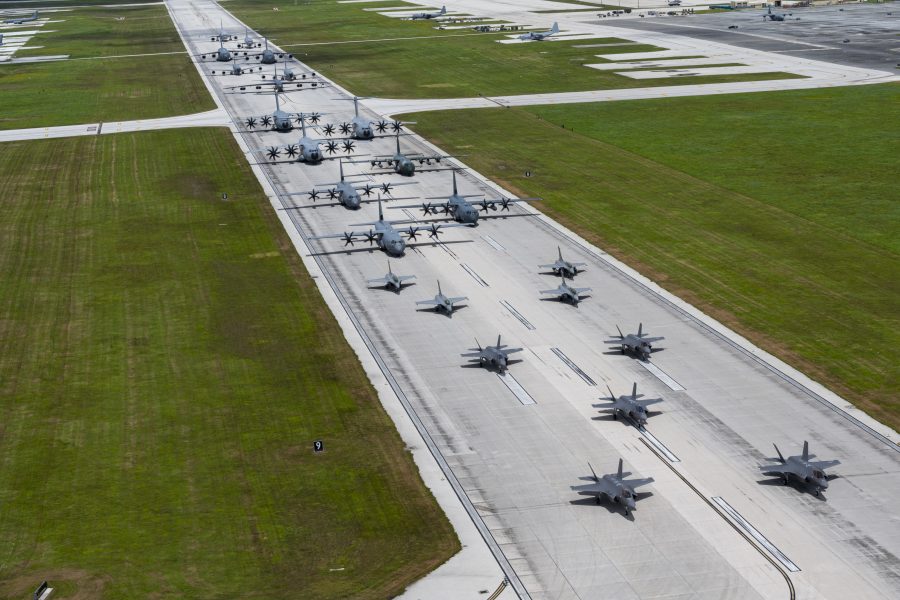Andersen Air Force Base on Guam is preparing for potential infrastructure upgrades to host up 12 Singaporean F-15 fighters, following a 2019 agreement between the two nations.
The proposal, as detailed in a December release, would see around 209 acres of Guam reshaped over the next three to seven years into developed sites or maintaining greenery post-construction. The upgraded site aims to provide training facilities for the Republic of Singapore Air Force’s F-15SG, Boeing’s advanced version of the F-15E Strike Eagle.
The Department of the Air Force release also noted that the facilities “could support … other DAF, service component, and partner nation aircraft or missions operating from Andersen AFB now or in the future.”
In terms of the Pentagon’s strategic competition with the People’s Republic of China, the proposal is mostly about building a relationship with the RSAF as a counterbalance to Chinese influence in Southeast Asia, J. Michael Dahm of the Mitchell Institute for Aerospace Studies told Air & Space Forces Magazine.
“Guam is the closest airbase where the USAF can build this bilateral training relationship and a level of interoperability with the RSAF, so if called upon in a crisis in East Asia, the Singapore Air Force and the U.S. Air Force can work together effectively,” Dahm said.
The U.S. and Singapore routinely interact through military exercises, and their air forces conducted their annual three-week air training in November 2023, involving fighters from both nations.
Singapore’s history of military training in Guam dates back to the 1990s. Putting F-15s at Andersen would mark the fourth RSAF detachment on U.S. soil—F-16s are at Luke Air Force Base, Ariz., F-15s are at Mountain Home Air Force Base, Idaho, and AH-64 Apache helicopters are in Marana, Ariz.
The Guam construction proposal is grounded in the 2019 Memorandum of Understanding for the RSAF Training Detachment in Guam. According to the MOU, Anderson will host RSAF F-16s and airborne early warning aircraft for training in the future as well.
Shifting training to Guam would benefit the RSAF by ensuring operational readiness and facilitating swift redeployment when necessary.
“Singapore has a modern, Western Air Force by all standards, but they don’t have vast terrains like China or the United States such as the Gulf of Alaska where the Air Force can do training,” Dahm said. “They also don’t have a peer air force they can train with on a regular basis.”
At Andersen, the RSAF would have access to American equipment and fighters, Western technology, maintenance, logistics, ammunition storage, and an opportunity to train alongside American Airmen—all. while remaining close to home, Dahm explained.
“Singapore fighters could train with the U.S. Air Force on the Indian Ocean side of the Strait of Malacca, or on the South China Sea side of the Strait of Malacca, when the USAF deploys to Singapore, Thailand, or other Southeast Asian nations.” Dahm said. But even then, the airspace around the Strait of Malacca is “some of the most crowded airspace in the world,” he added.
The Andersen proposal includes enhancements such as airfield pavements, a new hangar, maintenance buildings, fuel systems, fencing, roads, parking, and stormwater management. The Department of Air Force will evaluate the proposal’s environmental impact through an Environmental Impact Statement (EIS) in line with the National Environmental Policy Act. This includes consulting with resource agencies, conducting surveys, and assessing potential impacts. The Draft EIS is due in mid-2024, with the Final EIS and a decision expected in early to mid-2025.
